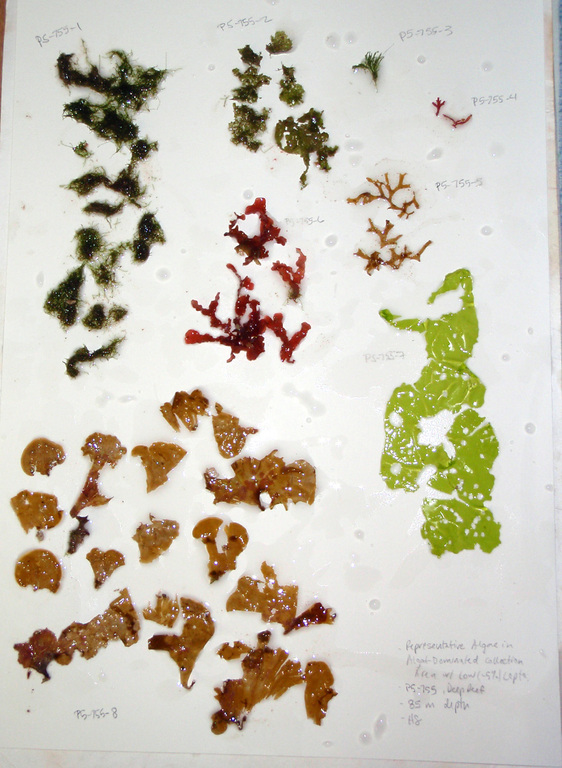Behind the science:
Fungi associated with mesophotic macroalgae from the ‘Au‘au Channel...
2017, September 21
Posted by Veronica Radice
Fields
Biodiversity
Molecular ecology
Focusgroups
Algae (Macro, Turf and Crustose Coralline)
Other endosymbionts (non-Symbiodinium)
Fungi
Locations
USA - Hawaii
Platforms
Manned Submersible
“Submersible pilots are like astute gardeners picking algae from mesophotic reefs”
What was the most challenging aspect of your study (can be anything from field, lab to analysis)?
Collection of the samples is without doubt the most challenging aspect of this work. As readers of mesophotic.org most likely know, these reefs are at depths that require much planning, impeccable attention to detail, a high level of logistical support and, unfortunately this type of work can be extremely expensive.
What was the most memorable moment in undertaking this study?
It was surprising to see such a high level of shared fungal Operational Taxonomic Units (OTUs) between terrestrial and mesophotic environments. Twenty seven percent of the OTUs found on the studied mesophotic reef were also found in terrestrial Hawaiian plants, demonstrating the remarkable ability of some fungi to tolerate, and thrive, in extremely different habitats.
What was your favorite research site in this study and why?
All of these samples were collected from the ʻAuʻau channel off Maui, Hawaii. So that was our favourite research site in this study! The calm protected waters and gently sloping substrate makes this one of the best locations in the world for formation of mesophotic reefs and macroalgal beds. In fact, the word “ʻAuʻau” means “to bathe”, and refers to the bath-like waters found in this channel.
Other than your co-authors, with whom would you like to share credit for this work?
This work really would not have been possible without generous funding from the National Oceanic and Atmospheric Administration (NOAA) Coastal Ocean Program under award NA07NOS4780187 to the University of Hawaii (awarded to Smith, Spalding), submersible support from the NOAA Undersea Research Program's Hawaii Undersea Research Laboratory under award NA05OAR4301108 (awarded to Smith, Spalding) and the National Science Foundation award #1255972 (awarded to Amend). We’d also like to acknowledge the submersible pilots and crew at HURL. The submersible pilots developed the amazing ability to pluck single blades of macroalgae from the bottom, like an astute gardener delicately picking a single flower from a flower bed. It’s not easy to do this with a manipulator arm, and we wouldn’t have these samples without their collection capabilities (and patience).
Any important lessons learned (through mistakes, experience or methodological advances)?
This work demonstrates the importance of scientists from different disciplines and different research labs working together and collaborating (Mycologists and Phycologists in this study). No new or novel techniques were employed in this work, we simply used existing collections and repurposed them for a different study. This ensured precious grant money was stretched as far as possible while demonstrating the uniqueness and value in further exploring these remarkable habitats.
Can we expect any follow-up on this work?
Hopefully, funding dependent, we will collect more samples that will likely reveal even more undescribed fungal OTUs. Future work will examine whether the newly discovered fungal species are pathogens, helpful symbionts or unimportant to their algae hosts. It is possible that some of these fungi could be beneficial to society -fungi have been shown to produce compounds that can used in the treatment of diseases and cancer, they even have applications in bioremediation of industrial waste and oil spills, who knows what these undescribed fungi on mesophotic reefs could do? These are all research avenues we would like to pursue in the future.
Featured article:
|
|
Fungi associated with mesophotic macroalgae from the ‘Au‘au Channel, west Maui are differentiated by host and overlap terrestrial communities | article Wainwright BJ, Zahn GL, Spalding HL, Sherwood AR, Smith CM, Amend AS (2017) PeerJ 5:e3532 |

|
